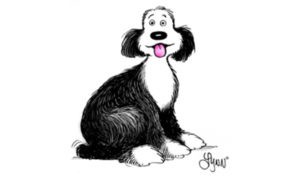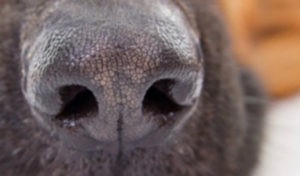 1. Open Flames
1. Open Flames
Keep your pet away from anything that burns, including fireplaces, candles, wood-burning stoves and space heaters. The obvious danger is that flames can singe or set fire to a pet’s fur, but they’re also at risk for smoke inhalation. Some pets are attracted to the warmth and flickers of a fire, so always monitor your animal when they’re in a room with an open flame.
2. Chemical Poisoning
Common winter chemicals like ice-melting salts, windshield wiper fluids and antifreeze can be deadly for cats and dogs. Methanol and ethylene glycol, the toxic ingredients in windshield wiper fluid and antifreeze, are dangerous to pets; ethylene glycol can cause permanent kidney damage, while ingestion of methanol will usually result in lethargy, vomiting and seizures. Pets may be attracted to the sweet smell and taste of antifreeze, and their bodies absorb the chemical rapidly. Signs like vomiting and loss of coordination can appear within an hour. If you think your pet has consumed even the smallest amount of antifreeze, take him to the veterinarian immediately.
Ice-melting salts can stick to your pet’s paws; dogs and cats who walk on streets and sidewalks that have been “de-iced” can suffer from chapped, painful paws. Licking his paws also puts your pet at risk for consuming the chemicals found in ice melts. Look for pet-safe ice-melting products, and wash your pet’s feet with a warm cloth after he comes in from outside.
3. Hypothermia and Frostbite
Your dog may love to romp in the snow, but that doesn’t mean she’s exempt from the effects of cold weather. Every dog needs some kind of shelter from the wind, rain, snow and cold. Small, old or thin-coated dogs are especially susceptible to hypothermia and frostbite. These dogs can benefit from a winter wardrobe that includes boots, coats and sweaters. Dogs who spend much of their time outside need a well-insulated dog house or igloo. Blankets, hay and even a pet-safe heated mat can help your dog maintain a healthy body temperature in her dog house. And don’t overlook a pet’s need for fresh, unfrozen water — invest in a heated bowl so your cat’s or dog’s water doesn’t turn to ice.
4. Carbon Monoxide Poisoning
Furnaces, gas water heaters, and gas or kerosene space heaters could emit toxic levels of carbon monoxide if they leak. This is dangerous to your family and your pet — especially if they spend more time inside the house during the winter months, thus exposing them to carbon monoxide leaks for longer periods of time. Leaving your dog in the car, or in a garage with a running car, can also result in carbon monoxide poisoning. Installing carbon monoxide detectors can protect every family member, whether they’re two- or four-legged.
5. Car Engines
When you return from an errand and park your vehicle in the driveway, an outdoor cat may see your warm car as the perfect place for a nap. But cats sleeping under car hoods can be injured or killed by the car’s fan belt when you turn it back on. Before starting your car, thump loudly on the hood to make sure a snoozing cat scampers off.
6. Coffee and Chocolate
These staples of a winter kitchen, among other foods, can be toxic for pets. Theobromine, an ingredient in chocolate, can cause seizures and even death if consumed by dogs. Even a few ounces of the sweet is enough to cause illness in a small pup. Signs of chocolate toxicity include vomiting, diarrhea, muscle tremors and a rapid or irregular heartbeat. The caffeine in coffee can also result in seizures, abnormal heart rhythm and death. To avoid an emergency trip to the vet, simply store these items in a place that your pet can’t reach.




